APF Front Wing
€550.00 – €600.00
Description
Armstrong APF Front Wing: A Revolution in Accessible Foiling
Effortless Flight Starts Here
The Armstrong APF Front Wing is more than just a new addition to Armstrong’s elite foil lineup—it’s a statement. Designed specifically for entry-level and progressing riders, the APF (Accessible Pump Foil) delivers the lift, stability, and smooth acceleration that make flying feel second nature. For the first time, you can experience high-performance foiling without battling a learning curve that feels more like a cliff.APF Front Foil
Because Armstrong is known for pushing design boundaries, the release of the APF series marks a shift. It’s not aimed at pros chasing podiums—it’s engineered for everyday foilers, weekend warriors, and first-timers who demand reliability, predictability, and progression potential. However, don’t mistake accessibility for mediocrity. This wing was built with the same attention to performance, materials, and detail as every Armstrong component—just tuned for low-speed, high-control flight.APF Front Foil
Why the Armstrong APF Front Wing Matters
APF Front Foil Designed for First Lift, Not First Limits
Although many foil wings claim to be beginner-friendly, few deliver true ease without compromising performance later. That’s where the Armstrong APF Front Wing shines. It offers slow-speed lift, intuitive handling, and ultra-stable tracking. Additionally, it retains agility, pumpability, and system compatibility that allow riders to grow into more advanced disciplines—without needing to replace everything.
This wing thrives in low-speed environments like dock starts, flatwater pumping, beginner wing foiling, and small-surf prone riding. It’s also a standout choice for heavier riders who need more surface area without sacrificing control.
APF = Accessible Pump Foil, Not Average Performance Foil
What Does APF Stand For?
-
A = Accessible — Easy for new riders to use, without constant balance correction
-
P = Pump — Tailored for efficient dock starts, flatwater pumps, and glide connections
-
F = Foil — Optimized hydrodynamics for smooth lift and flow at the lowest planing speeds
Unlike performance-tuned HA or MA wings, the Armstrong APF Front Wing encourages success at lower speeds. Consequently, the foil lifts earlier, holds lift longer, and lets you focus on movement—not micro-adjustments. Whether you’re taking your first step into foiling or teaching someone else, this wing changes the game.
A Closer Look: What Sets the APF Front Wing Apart
Massive Low-End Lift
The APF series boasts an ultra-high lift coefficient, which allows it to rise even when moving slowly. This makes waterstarts easier, minimizes energy expenditure, and enables dock-start foiling without elite-level leg strength. Riders immediately notice the difference: lift comes smoothly, without the harsh surges found in more advanced wings.


Moreover, this trait opens the door for:
-
✅ Easier dock starts
-
✅ Slower takeoffs for beginners
-
✅ Boosted carry between small swell bumps
-
✅ Reduced sink rate during glides
Pitch-Stable at Any Speed
Unlike twitchy high-aspect wings, the Armstrong APF Front Wing resists sudden pitch changes. That means when you accelerate, glide, or shift stance, the foil remains stable underfoot. As a result, riders can focus on body movement and energy flow instead of constant correction.
This feature is especially critical when:
-
Learning to balance after lift
-
Linking multiple dock-starts
-
Maintaining height while pumping
-
Coaching others in their first sessions
APF Front Foil Forgiving Stall Characteristics
Every rider stalls a foil—it’s part of learning. But the APF doesn’t punish you for it. Because of its generous chord and well-rounded camber, it reattaches quickly when lift is lost. That gives you a chance to correct mistakes before crashing down.Armstrong APF Front Wing
In fact, the APF’s stall behavior has been praised by instructors worldwide. New foilers get more ride time, less frustration, and faster progression—making it ideal for schools, demo fleets, and dedicated learning environments.
Built on Armstrong’s A+ Modular Platform
True to Armstrong form, the APF wing isn’t a throwaway beginner product—it’s a lifelong part of your quiver. It fits seamlessly into Armstrong’s A+ system, meaning you can pair it with different stabilizers, fuselages, and masts as your skills evolve.
Want to transition from dock starts to wing foiling? You can. Need to swap in a new tail wing for more pump power or glide control? No problem. With the Armstrong APF Front Wing, you’re not stuck—you’re set up to grow.
Robust Carbon Construction Built to Last
Even though it’s designed for new riders, the APF doesn’t compromise on durability. Constructed with Armstrong’s premium high-modulus carbon layup, reinforced with titanium hardware interfaces, this wing handles abuse—from flatwater to impact zones—with confidence.
That means:
-
✅ No twist under load
-
✅ No bubbling under heat
-
✅ No wobble after seasons of use
It’s a long-term investment in your foiling journey—whether you’re riding solo or teaching others to fly.
APF Model Sizes & Target Use
| Model | Surface Area | Primary Use | Ideal Rider Weight | Why It Works |
|---|---|---|---|---|
| APF 1880 | ~1880 cm² | Dock starts, pump, beginner wing | 60–95kg | Balanced control, ideal learning wing |
| APF 2180 | ~2180 cm² | Pumping, heavier rider support | 90–120kg+ | Ultimate float + lift for max forgiveness and glide |
Both models feature thick profiles, soft tips, and stable span distribution to promote predictable, clean lift and smooth transitions, even at low speeds.mast performance
Who Is the Armstrong APF Front Wing For?
-
🧠 First-time foilers looking for an easier entry
-
💪 Heavier riders needing extra lift and forgiveness
-
🏄 Instructors and coaches training new riders
-
🏞️ Explorers seeking slow-speed glide for longer rides
-
👨👩👧👦 Families or schools building community access to foiling
-
🎯 Dock-start athletes refining flatwater techniques with efficiency
Armstrong APF Front Wing: Real-World Performance & Rider Insights
Smooth Lift & Consistent Glide at Low Speeds
In actual riding conditions, the Armstrong APF Front Wing demonstrates exceptional lift even at the slowest speeds. Because of its high-volume design, it lifts quickly off the water, significantly reducing the effort required during dock starts and flatwater pumping. This immediate lift allows riders to focus more on balance and less on brute strength.wing board
Additionally, the glide feels smooth and steady. The foil maintains height effortlessly over small bumps, reducing the energy needed to maintain speed. As a result, riders experience longer, more enjoyable sessions with less fatigue.Armstrong APF Front Wing
wing board Effortless Pumping: Maximizing Energy Return
The APF Front Wing profile was specifically optimized to offer an elastic pumping cycle. Each stroke transfers energy efficiently into forward motion, with minimal loss due to drag or turbulence. This means riders can connect multiple pumps smoothly, even in challenging conditions like light wind or choppy water.Armstrong APF Front Wing
Furthermore, the forgiving stall behavior ensures fewer crash-outs during pump cycles. This is a significant advantage for beginners who are still mastering timing and weight shifts.APF Front Wing
Stability & Control That Build Confidence
Among all performance aspects, stability stands out. The APF wing’s balanced span and camber create a natural pitch stability. As riders shift weight or adjust speed, the foil responds predictably, avoiding sudden stalls or jerky pitch changes. This stability fosters confidence, encouraging riders to push their limits safely.APF Front Wing
Moreover, the wing’s wide chord and thick profile enhance control during turns. It provides smooth, responsive handling that’s ideal for progression from beginner to intermediate levels.APF Front Wing
Rider Testimonials: Trusted by New & Progressing Foilers
| Rider Name | Location | Riding Style | Feedback on Armstrong APF Front Wing |
|---|---|---|---|
| Emma J. | San Francisco, USA | Beginner Wing Foiling | “I lifted off on my third try! The stability makes learning fun.” |
| Marcus L. | Cape Town, South Africa | Dock Start Pumping | “The lift is crazy. I feel less tired and more in control.” |
| Sophie K. | Sydney, Australia | Prone Foiling | “Smooth transitions and forgiving stall saved me many times.” |
| Liam D. | Maui, Hawaii | SUP Downwind | “Perfect glide for long runs. I ride longer than before.” |
Comparative Metrics: APF Front Wing vs Other Armstrong Wings
| Metric | Armstrong APF Front Wing | Armstrong HA Front Wing | Armstrong MA Front Wing |
|---|---|---|---|
| Surface Area (cm²) | 1880 / 2180 | 725 – 1325 | 875 – 1225 |
| Lift Efficiency | Very High | High | Moderate |
| Glide Ratio | Moderate | Very High | High |
| Pumping Ease | Excellent | Good | Moderate |
| Stability | Very High | High | Moderate |
| Beginner Friendliness | Excellent | Intermediate | Advanced |
Summary: Performance Tailored for Progression
The Armstrong APF Front Wing delivers smooth, stable lift and excellent glide at low speeds, empowering new foilers to learn faster and ride longer. It excels in pumping efficiency and control, creating an enjoyable, confidence-building experience. Across disciplines, this wing bridges the gap between entry-level ease and progressive performance.
Armstrong APF Front Wing: Use Cases & Rider Profiles
Tailored to Your Style and Skill Level
| Use Case | Why APF Front Wing Excels | Recommended Model | Ideal Rider Skill |
|---|---|---|---|
| Dock Start Foiling | Early lift, stable tracking, minimal effort for smooth takeoffs | APF 1880 | Beginner to Intermediate |
| Flatwater Pumping | Efficient energy return, forgiving stall for repeated pumps | APF 2180 | Beginner to Intermediate |
| Beginner Wing Foiling | High stability, easy balance, smooth transitions | APF 1880 | New Foilers |
| Prone Foiling | Extra lift at low speeds, controllable turns | APF 1880 / 2180 | Beginner to Intermediate |
| SUP Downwind | Glide longevity, gentle lift, reduced fatigue | APF 2180 | Intermediate |
| Foil Schools & Rentals | Durable build, forgiving handling, confidence-boosting | APF 1880 / 2180 | All skill levels |
Rider Profile Guide by Weight & Skill
| Rider Weight | Recommended APF Model | Primary Benefits |
|---|---|---|
| Under 75kg | APF 1880 | Agile, easy lift, perfect for learning |
| 75-95kg | APF 1880 / 2180 | Balanced lift and glide for progression |
| 95kg+ | APF 2180 | Maximum lift, stability, and endurance |
Skill-Level Suitability
| Skill Level | How APF Front Wing Supports Progression |
|---|---|
| Beginner | Predictable lift, stable flight, forgiving stall |
| Progressing Foiler | Efficient pumping, smooth glide, responsive handling |
| Intermediate | Confident control, longer sessions, refined maneuverability |
| Advanced Foiler | (Transition wing) Used as stable glide option for training |
Why Choose Armstrong APF Front Wing?
-
Ease of Use: Perfect for those just getting started or improving their skills
-
Versatility: Performs across wing, prone, SUP, and pump disciplines
-
Durability: High-quality carbon and reinforced build for long-term use
-
Compatibility: Fully modular with Armstrong’s ecosystem to grow with your skill
Armstrong APF Front Wing: Materials & Construction Breakdown
Engineered for Durability and Performance
| Component | Material/Technology | Purpose | Benefit to Rider |
|---|---|---|---|
| Wing Core | CNC-Machined Closed-Cell Foam | Ensures precise shape and consistent thickness | Guarantees predictable lift and balanced hydrodynamics |
| Carbon Layup | Bi-Axial and Uni-Directional High-Modulus Carbon | Provides stiffness where needed, reduces flex | Enhances energy transfer and improves glide efficiency |
| Resin System | UV-Stabilized Epoxy Resin | Bonds carbon layers, resists UV degradation | Extends lifespan and maintains structural integrity |
| Leading Edge | Rounded with Lift-Optimized Camber | Smooth water entry and early lift generation | Facilitates effortless takeoff and stable flight |
| Wing Tips | Tapered Thin-Profile with Reinforced Carbon | Minimizes drag and turbulence | Increases agility and reduces tip stall |
Reinforcements & Structural Stability
| Feature | Technology Used | Function | Impact on Performance |
|---|---|---|---|
| Wing-Fuse Interface | Titanium Bolts with Precision Bushing Fit | Rigid, corrosion-resistant connection | Ensures consistent power transfer and durability |
| Tip Reinforcements | Multi-Directional Carbon Fiber Wrap | Protects against impacts and wear | Maintains shape and structural integrity |
| Stress Load Distribution | Strategic Carbon Fiber Orientation | Allows flex in turns, maintains stiffness in glide | Balances responsiveness and stability |
| Trailing Edge | Reinforced Foam Core with Carbon Overlay | Prevents flutter and drag at high speeds | Provides smooth and quiet ride |
Surface & Finish
| Finish Type | Purpose | Advantage |
|---|---|---|
| Matte Anti-Turbulence Coating | Reduces micro vortices and drag | Improves laminar flow for smoother, faster rides |
| Low Porosity Carbon Skin | Prevents water absorption | Maintains consistent performance across conditions |
| UV Protective Layer | Shields against sun damage | Prolongs foil lifespan and maintains appearance |
Durability & Environmental Resistance
| Durability Aspect | What It Does | Long-Term Benefit |
|---|---|---|
| Saltwater Resistant Resin | Prevents chemical damage from marine exposure | Ensures foil remains strong and responsive over years |
| Corrosion-Free Hardware | Titanium and anodized aluminum inserts | Avoids rust, especially in saltwater environments |
| Shock Absorption Tips | Reduces impact damage from bumps and knocks | Minimizes costly repairs and downtime |
| Thermal Stability | Controls material expansion under temperature changes | Keeps foil performance consistent in varied climates |
Weight Overview by Model
| Model | Approximate Weight | Performance Note |
|---|---|---|
| APF 1880 | ~980g | Lightweight and manageable for beginners |
| APF 2180 | ~1080g | Slightly heavier for enhanced lift and stability |
Why APF Front Wing Construction Leads the Market
-
High precision CNC core milling for unmatched shape accuracy
-
Superior carbon layups tailored for strength and flex control
-
Premium resin systems for long-lasting finish and performance
-
Thoughtful reinforcement design minimizes wear and enhances safety
-
Environmentally conscious manufacturing reduces waste and energy use
Armstrong APF Front Wing: Compatibility, Setup & Tuning Guide
Fully Modular Design for Easy Upgrades
The Armstrong APF Front Wing integrates smoothly with Armstrong’s modular foil system, allowing riders to mix and match components as they progress. This flexibility ensures you won’t outgrow your gear prematurely.APF Front Wing
System Compatibility Overview
| Component | Compatibility Notes | Recommended Pairings |
|---|---|---|
| Fuselages | Compatible with Armstrong V2 and V2.5 fuselages | TC60 for stability, TC70 for glide and pump |
| Masts | Fits all Armstrong carbon masts (72cm, 85cm, 100cm) | 85cm mast offers balance; 72cm for freestyle |
| Tail Wings | Works with Flying V, HS, and APF stabilizers | Flying V for glide; APF stabilizers for control |
| Board Mounts | Compatible with Armstrong titanium and carbon plates | Use A+ Top Plate for maximum stiffness |
| Shims | Adjustable rear wing shim system for pitch tuning | +0.5º for lift; -0.5º for speed trimming |
Setup Step-by-Step
-
Attach the APF Front Wing to the fuselage with titanium bolts.
-
Mount the rear stabilizer and insert desired shim for pitch control.
-
Secure fuselage to mast with correct torque settings.
-
Connect mast to board using the recommended mounting plate.
-
Check all bolts, use Loctite Blue for safety if preferred.
-
Adjust rear wing shim and track position for ideal flight angle.
Pro Tip: Always carry extra shims and tools to fine-tune on-site.APF Front Wing
Shimming & Tuning Recommendations
| Goal | Shim Angle | Effect |
|---|---|---|
| Increase lift for early takeoff | +1.0º | Nose-up pitch, easier foil takeoff |
| Balanced glide & control | +0.5º | Smooth lift and stable tracking |
| Maximize speed & reduce lift | 0º to -0.5º | Flatter foil angle for faster rides |
Tail Wing Pairing Guide
| Tail Wing Model | Purpose | Best Use Case |
|---|---|---|
| Flying V 200 | Low drag, fast glide | Downwind, long pumping sessions |
| HS 232 | Moderate lift, responsive turning | Prone foiling, freestyle |
| APF Stabilizer | Stable, forgiving | Beginners and progression |
Mast Length Suggestions
| Mast Size | Benefits | Recommended For |
|---|---|---|
| 72cm | Lower swing weight, more maneuverable | Freestyle, dock starts, shallow water |
| 85cm | Balanced for most riding styles | All-around foiling |
| 100cm | Maximum clearance and glide | Open ocean, downwind racing |
Board Track Positioning Tips
| Board Type | Track Position | Reason |
|---|---|---|
| Wing Foil Boards | Center to slightly forward | Balanced stance and control |
| SUP Foil Boards | Slightly rearward | Pitch control and easier takeoff |
| Prone Foil Boards | Center to forward | Lift and easy pumping |
| Dock Start Boards | Slightly forward | Faster liftoff and stable pump starts |
Troubleshooting Common Issues
| Issue | Possible Cause | Solution |
|---|---|---|
| Foil lifts too early | Excessive positive shim angle | Reduce shim or move foil slightly back |
| Foil struggles to lift | Negative shim or rear track | Add shim angle or move foil forward |
| Difficult turning | Large stabilizer or long fuselage | Try smaller stab or shorter fuselage |
| Ventilation or cavitation | Loose bolts or damaged finish | Tighten hardware and clean foil surface |
Advanced Riding Techniques & Progression Guide
Mastering Your Flight: From Basics to Next-Level Moves
Once you’ve got comfortable with the Armstrong APF Front Wing, progressing to more advanced techniques becomes both rewarding and accessible. The wing’s forgiving design supports learning crucial skills that unlock new levels of foiling freedom.
1. Refining Pumping Efficiency
Effective pumping is key to sustaining speed and height without wind assistance. The APF wing’s efficient lift allows smoother pumping cycles, so focus on:
-
Timing your weight shifts: Shift weight rhythmically from front to back foot, syncing with wing dips.
-
Using your core: Engage your core muscles to generate power rather than relying solely on legs.
-
Minimizing drag: Maintain a steady glide between pumps to conserve momentum.
Consistent pumping drills build endurance and improve connection between rider and foil.
2. Carving Smooth Turns
Thanks to its stability, the APF wing helps riders practice carving turns with greater control:
-
Initiate turns gradually: Lean into your toes or heels smoothly instead of abrupt movements.
-
Maintain foil angle: Use subtle body shifts to keep the wing’s angle stable and avoid stalls.
-
Flow through transitions: Link turns into fluid sequences to enhance style and control.
With practice, carving becomes a confident tool for navigating waves or crowded spots.
3. Advanced Takeoffs & Dock Starts
Mastering low-speed takeoffs requires understanding foil behavior at minimal velocity:
-
Use slight tail shim adjustments to increase lift if needed.
-
Position your weight forward to assist early foil engagement.
-
Practice explosive leg push-offs combined with smooth board trim.
The APF wing’s forgiving stall traits make early lift achievable, encouraging progressive skill building.
4. Downwind Pumping & Glide
To maximize long downwind runs:
-
Use subtle pump timing to maintain speed without wasting energy.
-
Keep board trim balanced to maintain foil efficiency.
-
Adjust body position slightly forward for lift and stability in variable chop.
These techniques improve session duration and enjoyment.
5. Common Mistakes & How to Fix Them
| Mistake | Cause | Correction |
|---|---|---|
| Early stalls during pumping | Excessive weight on front foot | Shift weight slightly back during pumps |
| Wobbly takeoff | Too aggressive board angle | Soften board angle; practice gradual lift |
| Difficulty turning | Over-leaning or stiff body | Relax stance; initiate turns slowly |
| Loss of speed on glide | Poor pump timing or drag buildup | Focus on smooth pump rhythm and clean glide |
6. Training Drills for Progression
-
Pump & Glide Intervals: Alternate between 10 pumps and steady glide, gradually increasing glide time.
-
Balance Drills: Practice lifting one foot briefly to improve core stability.
-
Carving Practice: Set cones or markers and practice smooth turns around them.
Regular training builds muscle memory and confidence, accelerating advancement.

Conclusion: Growth with the Armstrong APF Front Wing
The Armstrong APF Front Wing not only makes starting foiling easier but also supports riders as they evolve. Its design encourages skill development through intuitive handling, stability, and progressive performance. Embrace the learning curve with a wing that grows with you—every ride, every session.
Armstrong APF Front Wing: Maintenance & Longevity Tips
Keep Your Wing Performing at Its Best
Proper maintenance extends the life of your Armstrong APF Front Wing while preserving optimal performance. Since this wing is built to last, routine care ensures you’ll enjoy smooth flights season after season.
1. Regular Cleaning
-
Rinse with fresh water immediately after use, especially after saltwater sessions, to prevent corrosion and salt buildup.
-
Use mild soap and a soft cloth for deeper cleaning, avoiding harsh chemicals that could degrade resin or carbon layers.
-
Dry thoroughly before storage to prevent mold and mildew.
2. Inspect for Damage
-
Check for cracks or delamination regularly, focusing on the leading edge and wing tips.
-
Tighten bolts and screws to manufacturer torque specs to avoid loosening during rides.
-
Look for hardware corrosion, replacing any parts that show rust or wear.APF Front Wing
3. Storage Recommendations
-
Store the wing in a cool, dry place away from direct sunlight to protect the resin and UV coating.
-
Avoid stacking heavy objects on the wing to prevent deformation.
-
Use a foil bag or protective cover during transport and storage.
4. Transport Tips
-
Always secure the wing firmly during transport to avoid impacts.
-
Use padded bags or wraps to minimize abrasion and accidental damage.
-
Avoid exposing the wing to extreme temperatures inside vehicles.
5. Repairs and Warranty
-
Minor surface scratches can be repaired with UV-resistant epoxy kits available from Armstrong or certified dealers.
-
For major damage, consult Armstrong’s authorized repair centers to maintain warranty coverage.
-
Armstrong provides a limited warranty covering manufacturing defects—register your wing for full benefits.
6. Seasonal Care
| Season | Maintenance Actions |
|---|---|
| Pre-season | Full inspection, clean thoroughly, check bolts |
| During season | Rinse after every session, inspect weekly |
| Off-season | Deep clean, store properly, check for repairs |
Summary: Care Equals Confidence
By following these maintenance tips, the Armstrong APF Front Wing will retain its performance characteristics longer, saving you time and money on repairs. Regular care not only preserves your investment but also guarantees safety and reliability on every flight.
Additional information
| Size | APF1350, APF1675, APF1880 |
|---|
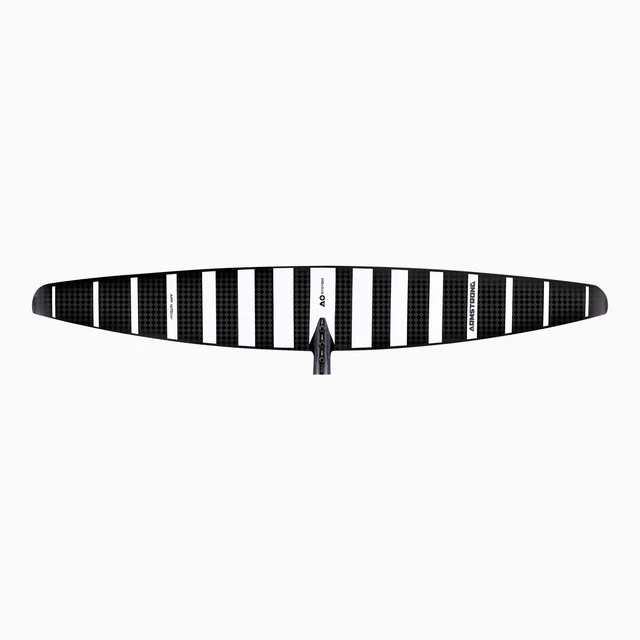

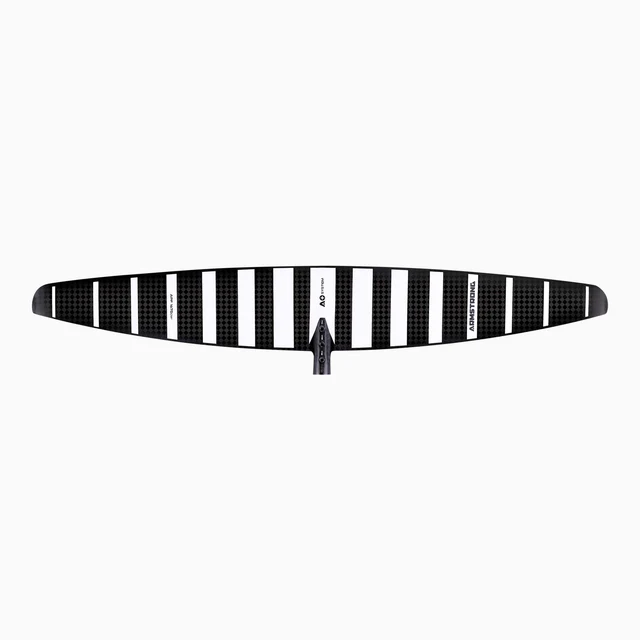
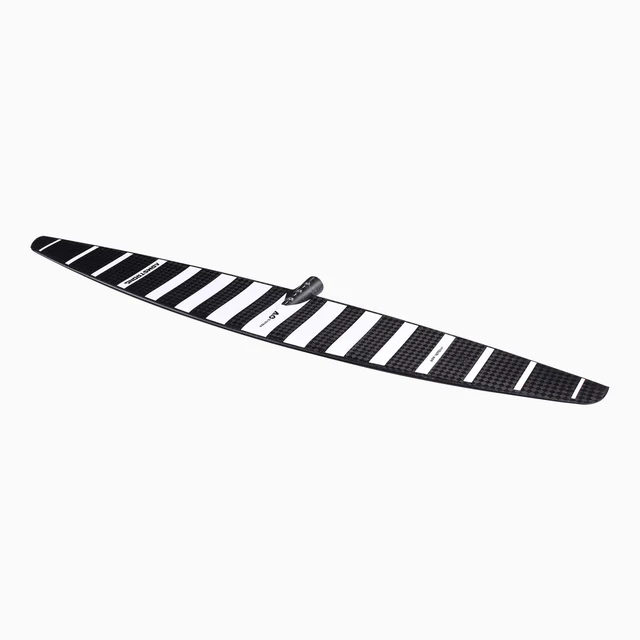
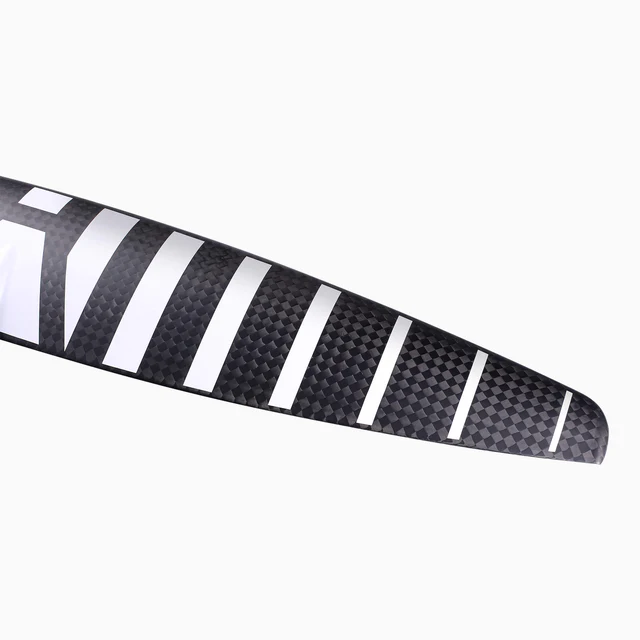
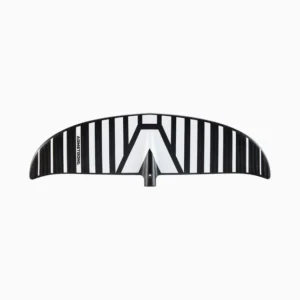
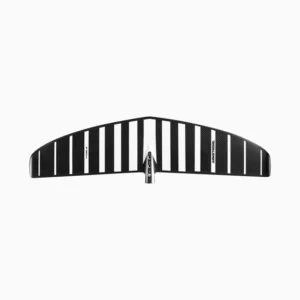
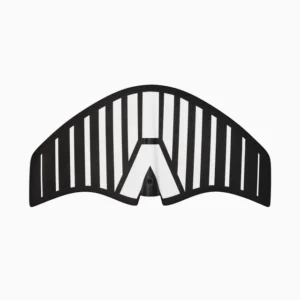
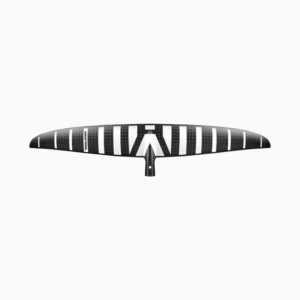
Reviews
There are no reviews yet.